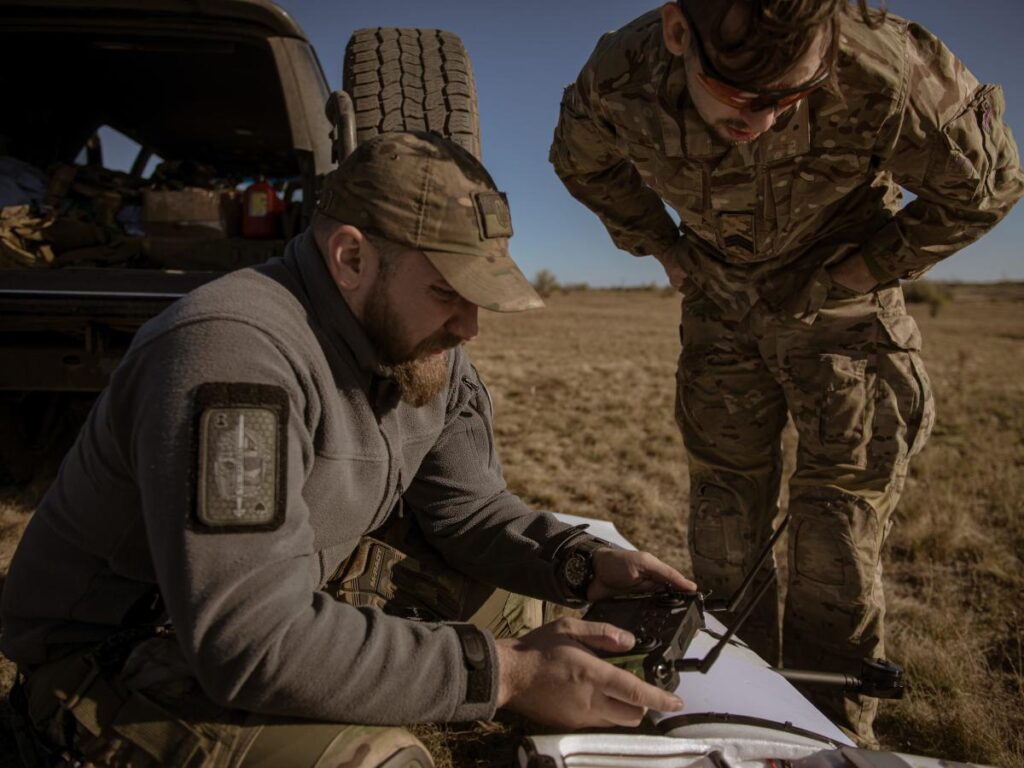In Ukraine, drone units have significantly transformed their operational approach, exemplifying a blend of traditional military structure and innovative startup culture. Unlike conventional military units, some Ukrainian drone squads, such as the Clear Eyes battalion, began as groups of unpaid civilian enthusiasts utilizing commercially available drones to surveil Russian troop movements. The battalion’s evolution highlights its shift toward a more organized structure with dedicated engineering workshops, pilot-training environments, and even recreational spaces like ping-pong tables. This unique fusion of civilian ingenuity and military objectives has made Ukrainian drone pilots some of the most effective soldiers on the contemporary battlefield.
The concept of drone warfare in Ukraine reflects a broader adaptation to the challenges posed by the Russian invasion. Clear Eyes is led by Heorhiy Volkov, who previously owned a marketing agency. He emphasizes the importance of innovation, logistics, and communication within the group, asserting that collaboration is vital for achieving their tactical goals. Volkov’s perspective illustrates the informal nature of these units; most members are civilians with no prior military experience, often disregarding traditional military protocols such as saluting and following a strict chain of command. This environment fosters creativity and adaptation as they strive to leverage technology against a larger and well-equipped adversary.
Since Russia’s full-scale invasion began in February 2022, Ukraine has increasingly relied on drone technology to counteract its military disadvantages. The strategic use of drones has allowed Ukraine to target Russian positions effectively, including ammunition depots and critical energy infrastructure within Russia itself. Such operations have not only weakened the Russian military’s supply lines but have also diminished its artillery supremacy. This unconventional warfare approach has forced Russian forces to adopt more cautious behaviors in their operational planning, thereby diminishing their overall combat effectiveness.
Ukrainian drone tactics have also extended to maritime warfare, utilizing innovative naval technologies, including sea drones, to compromise the Russian Black Sea Fleet. This strategy has led to a significant reallocation of Russian naval capabilities away from Crimea, reflecting the fluid dynamics of the ongoing conflict. Additionally, Ukrainian forces have developed new drone models capable of executing unconventional strike techniques, such as the recent deployment of “dragon drones” that drop incendiary materials from the sky, an approach meant to create psychological instability among Russian troops.
Interviews with individuals like Oleksandr Dakhno offer a personal insight into the human element of this drone warfare revolution. As a former coworking space director turned drone pilot, Dakhno claims to have successfully targeted numerous Russian soldiers, showcasing the lethal effectiveness of civilian-conceived tactics. His experiences reflect the stark nature of modern warfare, where conventional military training is supplanted by rapid technological adaptation and strategic improvisation. Accounts like Dakhno’s serve not only to underline individual contributions but also paint a picture of a collective effort built on creativity and resilience.
In October, Ukrainian President Volodymyr Zelenskyy announced a significant ramp-up in domestic drone production capabilities, declaring that Ukraine can manufacture four million drones annually. This surge in production is indicative of the success and adaptation of Ukraine’s defense industry amidst the ongoing conflict. Zelenskyy’s remarks underline a broader narrative: in the face of relentless Russian assaults, Ukraine’s ability to innovate and adapt has fostered a burgeoning defense sector capable of meeting the demands of modern warfare. As these drone units continue to expand and evolve, they represent a pivotal shift in how Ukraine confronts its adversaries, merging civilian technology and military strategy into a formidable defense mechanism.

